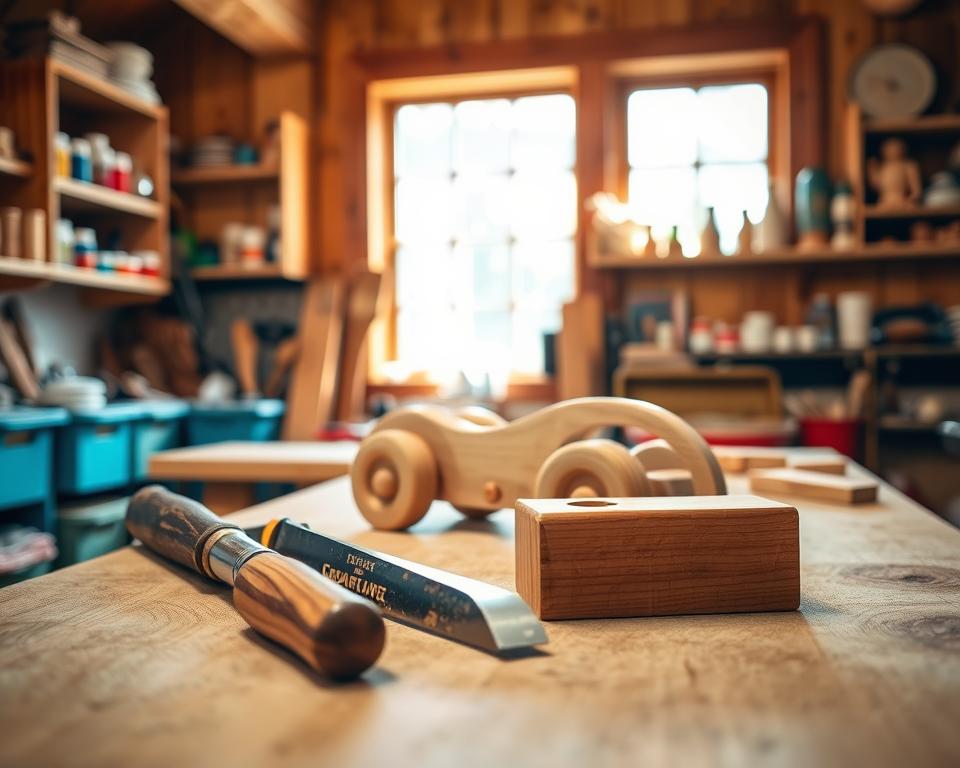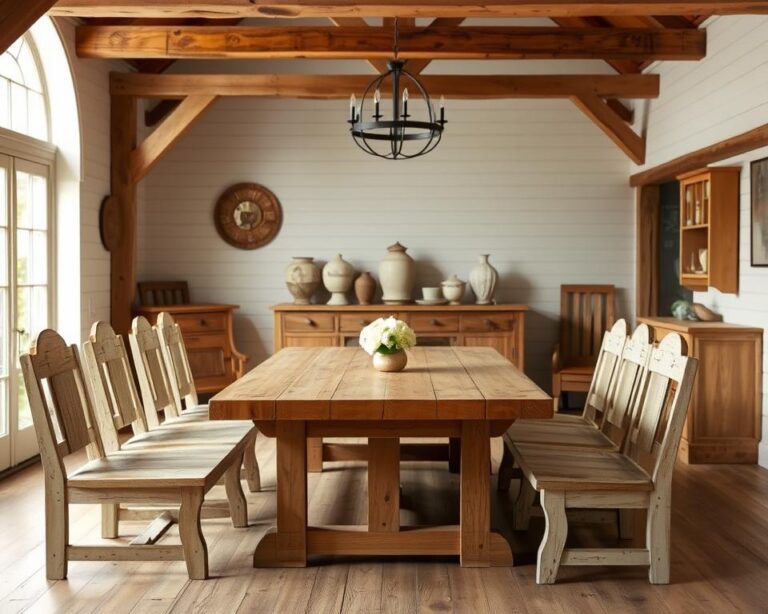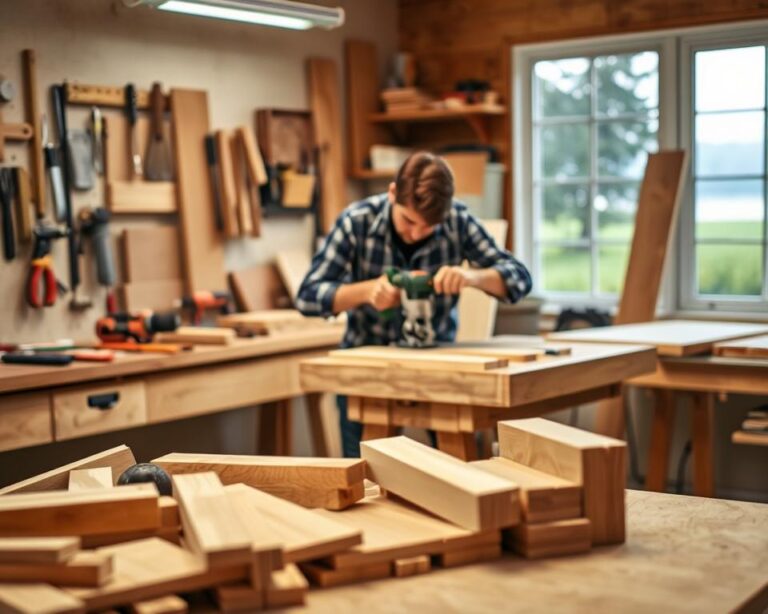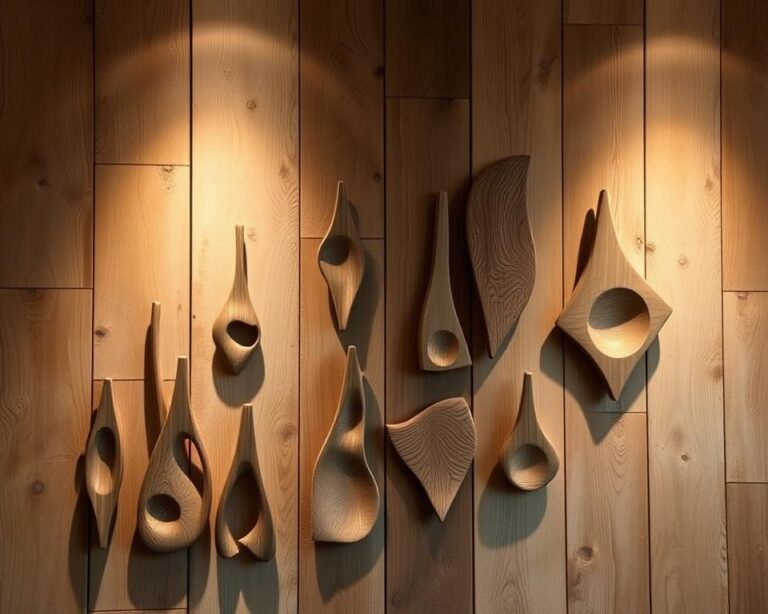In the United States, the wooden toy market has grown by over 25% in five years. Parents are choosing safety and creativity for their kids. Making your own wooden toys can be very rewarding. You create safe, fun toys and encourage creativity and teamwork with your children.
This guide will take you on an exciting journey. You’ll find DIY wooden toy projects that lead to unique toys and treasured family moments. Each toy you make will have your personal touch. With this wooden toy making tutorial, you’ll get all the steps to make toys that are fun, safe, and good for child growth.
Why Choose Wooden Toys for Kids?
Wooden toys offer lots of benefits that help in both play and growth. These toys boost thinking and movement skills. They also make playing safer.
Benefits of Traditional Wooden Toys
Wooden toys are not just tough. They are made from natural stuff, making them a safe pick for kids. They spark creativity and feel nice to touch, unlike plastic toys. These tough toys can handle lots of playing. They stay with your child as they grow.
Safety Concerns with Plastic Toys
When picking toys, it’s important to think about how safe wooden toys are compared to plastic ones. Plastic toys can be risky because they might cause choking or expose kids to bad chemicals. Parents worry about the safety of the materials in plastic toys. Choosing wooden toys made with safe materials eases these fears. It makes playtime healthier.
Sustainability and Eco-Friendliness
Wooden toys are good for the earth too. They’re made in a way that helps our planet. Choosing them teaches your kids to care about the environment early on. Wooden toys leave a smaller mark on the earth than plastic toys. This teaches kids about living sustainably.
Essential Tools for Wooden Toy DIY
To begin making wooden toys, you need the correct tools. Choosing the right woodworking tools for beginners will help make your project fun and smooth. Here, we’ll go over the key tools and safety gear needed for safe and creative toy-making.
Basic Hand Tools You’ll Need
For your wooden toys, start with some basic hand tools. You’ll need:
- Saws (hand saw, coping saw)
- Hammers
- Sandpaper
- Clamps
- Measuring tape
- Pencils for marking
These tools are crucial for shaping, joining, and finishing your wooden toy projects.
Recommended Power Tools for Beginners
If you want to make toy-making easier, consider getting some power tools. These tools will help speed up your work:
- Jigsaw for intricate cuts
- Drill for making holes
- Orbital sander for smooth finishes
Adding these tools to your set will help you bring your creative ideas to life more easily.
Safety Equipment Needed
Safety should always come first in your DIY projects. The right safety equipment for woodworking keeps you safe and worry-free. You should have:
- Safety goggles for eye protection
- Work gloves to protect your hands
- Dust masks for breathing safety
Having a safe place to work and the right tools makes a secure space for you and your kids to build together.
Selecting the Right Wood for Your Project
Picking the right wood is crucial when making toys. You want to ensure they are safe and fun for kids. Learn about the best types of wood for toys. Also, know where to buy quality materials. When you choose wisely, your toys will look good and be safe for kids to enjoy.
Types of Wood Suitable for Toys
Several woods are great for toys because they are strong and safe:
- Maple: Its strength and fine grain make it less likely to splinter.
- Beech: This wood is strong, easy to work with, and durable.
- Birch: Birch is chosen for toys since it’s strong but light.
- Pine: Though soft, untreated pine can work well for various projects.
Where to Purchase Quality Wood
Look for good wood at local hardware stores or specialty shops. They should sell non-toxic supplies. Plenty of options exist online too. Make sure you buy from trustworthy suppliers. Check their reviews and confirm the wood’s quality. It’s important for making safe toys.
Avoiding Toxic Wood Varieties
Some woods are not safe for toy-making. They can release dangerous chemicals over time. Here are types to stay away from:
- Chemically treated woods, which can release harmful substances.
- Softwoods like cedar and redwood, which contain toxic oils.
- Exotic woods, which might cause allergic reactions or be unsafe.
Being careful with your wood choice means safer, more enjoyable toys. By picking the right materials, your projects will show your dedication to quality.
Designing Your Wooden Toy: Getting Started
Starting your wood toy project begins with creativity and a spark of inspiration. It’s the phase where you turn your ideas into real designs. Look for inspiration in kids’ hobbies, nature, or even successful toys to spark imagination.
Inspiration Sources for Toy Design
Looking for inspiration is key to getting creative. Find your spark in:
- Children’s favorite stories and characters
- Nature and outdoor activities
- Popular trends in children’s toys
- Existing wooden toy ideas available in stores
Sketching Your Ideas
With your ideas in hand, start sketching. This helps bring your visions to life, showing how pieces fit together. Don’t aim for perfection, just convey your ideas well. Sketching takes your designs from thoughts to reality.
Elements to Consider in the Design
When making wood toys, think about these important factors:
- Functionality: What will the toy do? Consider how kids will play with it.
- Age-appropriateness: Make sure the toy fits the child’s developmental needs.
- Ease of assembly: Keep the building process simple for a fun crafting experience.
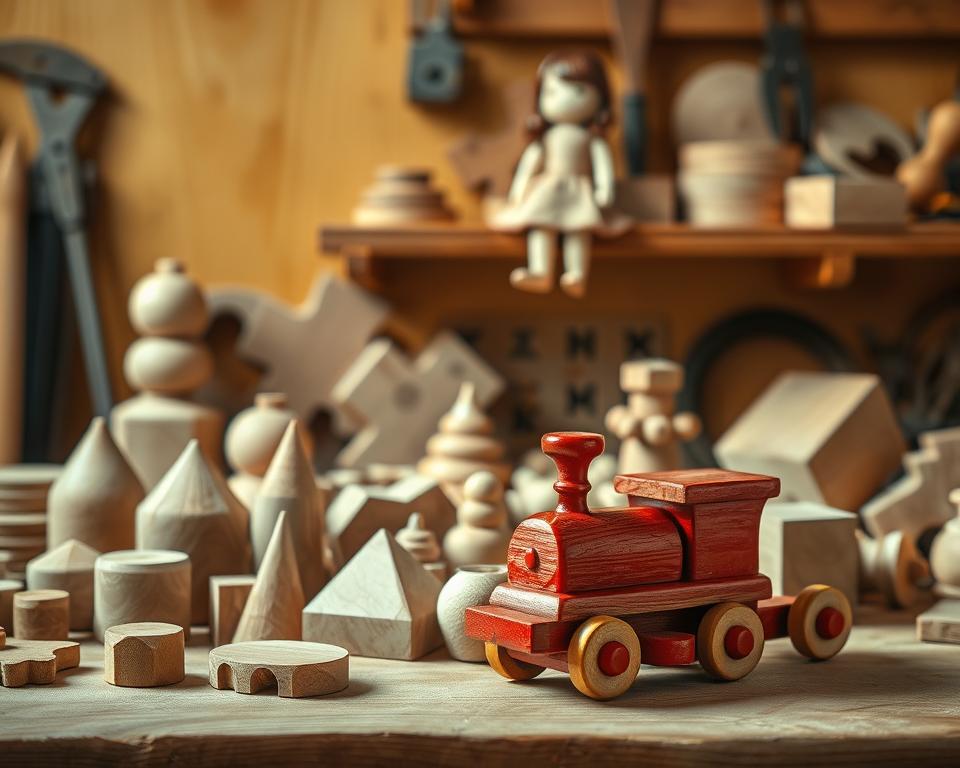
Step-by-Step Guide to Building a Simple Wooden Toy
This guide shows you how to make wooden toys easily. It uses a step-by-step method to ensure you succeed. Each step helps you make a toy that’s both fun and safe for kids.
Preparing Your Materials
First, get all the materials you need. Choose woods like pine or birch, which are great for toys. Have tools like a saw, drill, and sandpaper ready. Setting up your workspace beforehand makes building toys more efficient.
Cutting and Shaping the Wood
Follow your design closely when cutting wood. Remember, measure twice and cut once. Then, use sandpaper to shape the wood pieces. Smooth edges are a must to keep the toy safe from splinters. Learning how to cut and shape wood is key.
Assembly Techniques for Durability
How you put the toy together affects how long it lasts. Start by using good wood glue on the parts that join. Then, use screws for extra strength. This step makes your toy durable and safe for playing. A strong toy means kids can play without worry. For more tips on how to assemble toys, check out this guide.
Finishing Touches: Painting and Sealing
Finishing your wooden toy goes beyond putting it together. It’s about making it safe and beautiful. Choosing non-toxic paints is crucial for keeping playtime safe and fun. These paints come in many bright colors and are safe for kids.
Choosing Non-Toxic Paints
Picking non-toxic paints is key, not only for looks but for safety. Look for paints without harmful chemicals. Water-based paints are a good choice for wooden toys. Brands like Green Planet and Eco-Friendly Paints have safe options for your toys.
Applying Finishes Safely
Always follow product instructions when applying finishes. Think about using natural oils, like linseed or hemp, and safe sealants. They protect the toy and make it look good. A well-finished toy can last a long time and brings joy to play.
Creative Painting Techniques for Kids
Letting kids paint their toys is fun and lets them show their creativity. They can try sponge painting or use templates. Mixing colors or making their designs makes the process fun. They’ll feel proud of their unique, safe toy.
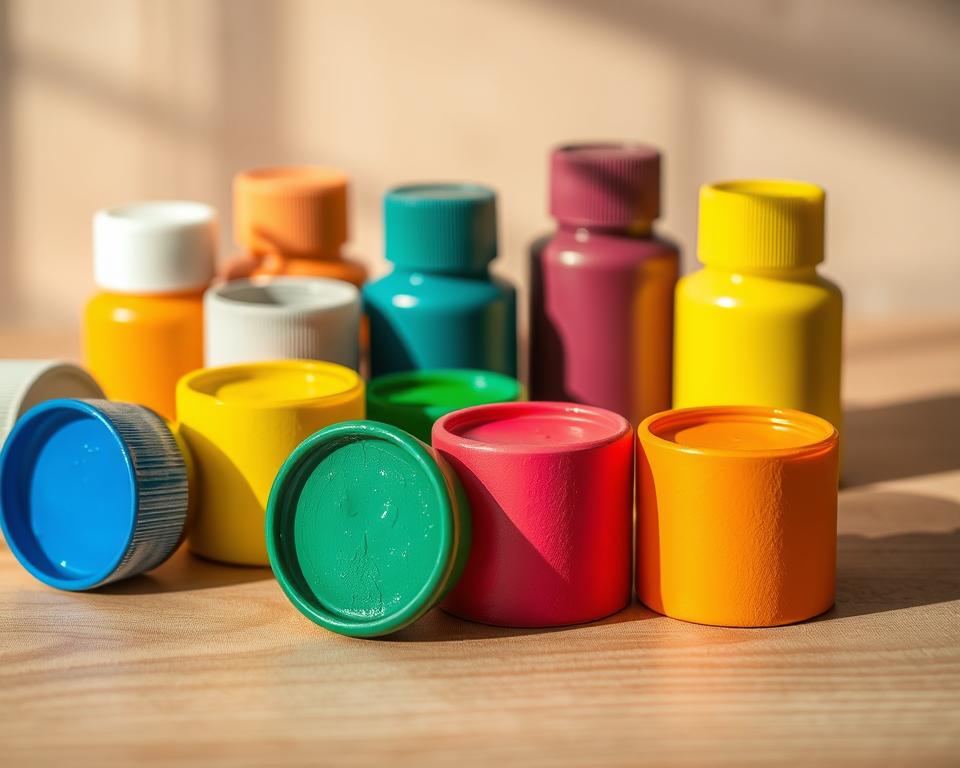
Artistic touches and safe materials make a project special. Look at all the finishing options to make a safe, pretty toy for your kids.
For more on finishing wooden toys, check out this guide for extra tips and finishes.
Ensuring Safety and Durability of Your Toy
Making a wooden toy is rewarding. But it’s important to make sure it’s safe and durable before your kid plays with it. You want the toy to be fun and safe for them. This means you have to do a few key things.
Testing for Sharp Edges
Look over the toy carefully for sharp edges. Sand down any rough spots until they’re smooth. Doing regular checks can keep the toy safe, so your kid can have fun without getting hurt.
Making Parts Secure and Safe
Strengthen all joints and connections. Use safe glues and screws that are okay for kids’ toys. Making the toy durable ensures all parts stay together, making it safer for your child. Everything should be solid to avoid accidents.
Regular Maintenance Tips
Follow some upkeep tips to make wooden toys last longer. Look for damage like cracks or parts that come off. Putting on new sealant can protect the wood from damage and moisture. These easy steps help keep your toy safe and cherished for years.
Encouraging Creativity with DIY Wooden Toys
Making wooden toys is a great way to boost creativity. It lets you and your kids show your unique selves while doing something fun together. This task helps build a feeling of ownership and pride in what they create.
The Benefits of Customization
Customization can be about picking designs, colors, or themes that your kids love. Making the project personal makes it more exciting and helpful for learning. When kids see their own ideas turn into toys, they get more into it.
Inspiring Kids to Get Involved
Getting your kids to join in on DIY projects makes them more interested. They can choose wood, draw designs, or paint, which boosts their imagination and creativity. This empowerment doesn’t just create toys; it builds their problem-solving abilities and self-expression.
Ideas for Collaborative Family Projects
Think about doing woodworking projects as a family where everyone helps out. You could make a wooden puzzle, birdhouse, or a simple car. These activities are great for spending quality time together and teach basic crafting skills. Working as a team adds to the fun and makes the project more special.
Popular Wooden Toy DIY Projects
Exploring popular wooden toy DIY projects can spark your creativity and boost your crafting skills. You’ll find a wide range of wooden toy designs that are fun and educational. Each project is suitable for various skill levels, so they’re great for beginners. Here are some projects to start with on your woodworking journey.
Simple Car or Truck Designs
Making simple cars or trucks is a great start for beginners in woodworking. You can turn wood into playful vehicles that spark creativity. Adding things like removable wheels or colorful paint makes them even more special. These projects are not only easy but let your child make their vehicles unique.
Building a Dollhouse from Scratch
Creating a dollhouse lets you and your child’s imagination soar. When you build a dollhouse, you can add special touches that match your child’s likes. This project is great for showing off your woodworking skills and helps in storytelling during play. It’s a favorite because of its creative possibilities.
Creating Animal Puzzles
Animal puzzles are a fun mix of entertainment and learning. Making these puzzles involves cutting shapes that perfectly fit together, which helps kids solve problems. It’s a fun way to learn about animals and their traits while crafting. These projects are ideal for enjoyable family time.
Resources for DIY Wooden Toy Enthusiasts
Starting your wooden toy crafting journey is exciting but can be tough. There are many resources out there to help and inspire you. If you’re looking for guidance, ideas, or a way to learn by doing, finding the right resources can really boost your abilities. This, in turn, lets you make special toys for your kids.
Online Forums and Communities
Online woodworking forums let you meet others who love making wooden toys, too. These places are full of tips and tricks, suitable for both beginners and experts. By joining in, you can get new ideas and stay excited about your projects.
Recommended Books for Woodworking
Reading books about woodworking can also improve your skills. These books cover everything from choosing the right wood to complex design tips. Using what you learn from them can make your wooden toys even better.
Workshops for Hands-On Learning
Workshops are great for really getting into woodworking. You can find them at local studios or community colleges. They focus on teaching you in a hands-on way. This ensures you learn properly and can make safe, fun toys for kids.

